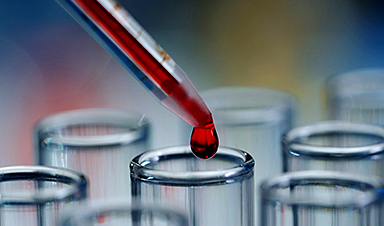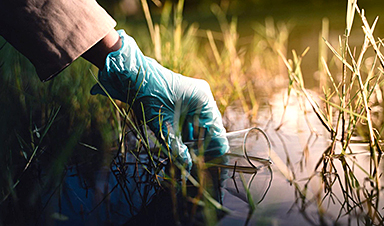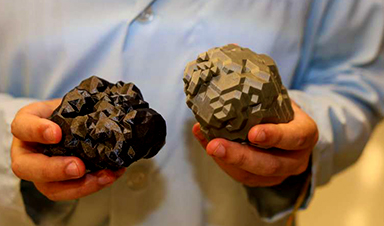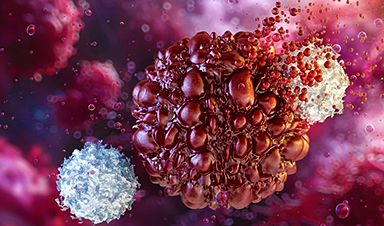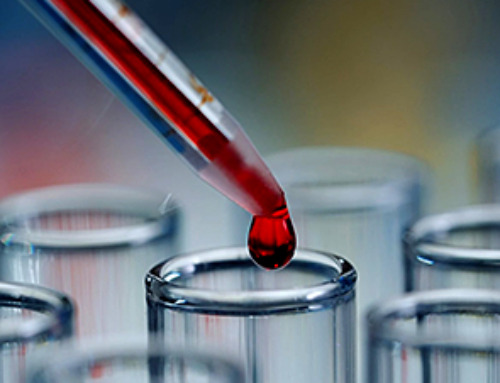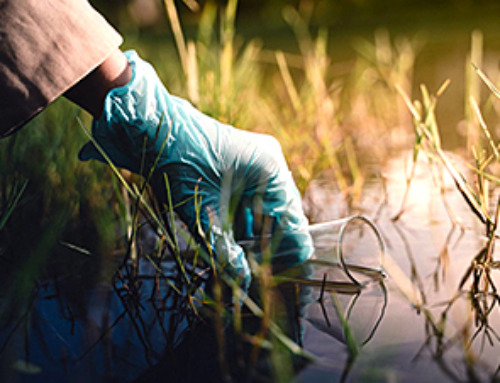As a team of South African researchers we have identified a new lineage of SARS-CoV-2, the virus causing COVID-19. A lineage represents a genetically distinct virus population with a common ancestor. This virus may be designated as a variant in future, based on significantly altered properties, but first we need to understand it better. Our findings so far are set out in a non pre-peer reviewed paper.
The new lineage, assigned the name C.1.2, has been found in all provinces in the country. While it shares some mutations with other variants, it is different in some respects.
Viruses mutate all the time. Sometimes the mutations result in an added benefit for the virus, such as increased transmissibility. But often mutations don’t do anything beneficial for the virus. So more mutations do not always mean trouble for us, its host.
For C.1.2, a lot is still unknown. For example, it’s too early to tell whether these mutations will affect transmissibility or vaccine efficacy.
The Network for Genomics Surveillance in South Africa has been monitoring changes in SARS-CoV-2 since March 2020. South Africa was one of the first countries globally to introduce systematic and coordinated genomic surveillance, sequencing genomes of SARS-CoV-2 from patient samples representative of different geographic regions and over time.
Its findings have provided insights into how and when SARS-CoV-2 was introduced into the country, and into its early spread. The Network has also been sequencing virus genomes to identify newly developing viral lineages of particular concern.
Later in 2020 the network detected what is now called the Beta variant of concern and more recently observed, almost in real-time, the arrival and rapid “take-over” of the Delta variant in South Africa.
What’s known, and what’s not known
We select patient samples from diagnostic laboratories throughout the country and perform sequencing to analyze the virus genomes. We then compare these sequences to those seen before and elsewhere. It’s very much like the game where you spot the difference between nearly identical pictures.
We’re playing spot the difference with SARS-CoV-2. When we find many differences – or differences in certain particularly important places like the spike of the virus – we pay special attention. We then look to see how often we see this particular virus and where – in one region of the country or in multiple regions, only in South Africa or also in other parts of the world. We also monitor whether it increases over time, which would suggest that it is replacing previous versions of the virus.
When we sequence the virus and compare it to other SARS-CoV-2 viruses it gets assigned a name based on the closest matching virus. We then look at the virus and the one that it matches to see how similar they are to each other. If we see a lot of differences that could be an indication of a new lineage.
In May 2021 we first detected a mutated group of related SARS-CoV-2 viruses in South Africa which has been assigned the lineage, C.1.2. So far, from May to August 2021, C.1.2 has been detected in all provinces. Yet it occurs at relatively low frequency and though we see small increases in this lineage overtime they remain very low.
This lineage possesses mutations within the genome that have been seen in other SARS-CoV-2 variants.
The network alerted the World Health Organisation (WHO) and the South African National Department of Health to this lineage in July. The two months between our first discovery and the notification comes from the lengthy process of sequencing and analysis. In addition, mutated viruses appear from time to time – but many disappear again. Therefore we needed to monitor this particular one to see if it would be detected in additional regions. Only when we started detecting it in other provinces and when it was reported also from other countries did we feel we had sufficient evidence to suggest a new lineage.
The surveillance network is continuing to monitor the frequency of the lineage across the country, and helping other African countries do the same. Also, tests to assess the functional impact of the mutations it harbors are under way – for example, how well do antibodies in people who have been vaccinated or infected previously neutralise the new virus, how well does it multiply in cell cultures compared to other virus variants, and so on.
The virus has not yet fulfilled the WHO criteria to be classified as a variant of interest or variant of concern. A variant of interest has genetic changes affecting important virus characteristics (transmissibility, disease severity, immune, diagnostic or therapeutic escape) and epidemiological impacts suggesting a risk to global public health. A variant of concern is the worst category – it’s a variant with proven increased transmissibility and/or virulence and/or decreased effectiveness of public health or medical tools such as vaccines, therapeutics, and tests.
Delta is a good example of a variant of concern that rapidly came to dominate the epidemic globally, causing major waves in many countries including those with advanced vaccination roll-out programs.
The C.1.2 lineage shares a few common mutations with all other variants of concern, including the Beta, Lambda, and Delta variants. But the new lineage has a number of additional mutations.
News
Researchers propose five key questions for effective adoption of AI in clinical practice
While Artificial Intelligence (AI) can be a powerful tool that physicians can use to help diagnose their patients and has great potential to improve accuracy, efficiency and patient safety, it has its drawbacks. It [...]
Advancements and clinical translation of intelligent nanodrugs for breast cancer treatment
A comprehensive review in "Biofunct. Mater." meticulously details the most recent advancements and clinical translation of intelligent nanodrugs for breast cancer treatment. This paper presents an exhaustive overview of subtype-specific nanostrategies, the clinical benefits [...]
It’s Not “All in Your Head”: Scientists Develop Revolutionary Blood Test for Chronic Fatigue Syndrome
A 96% accurate blood test for ME/CFS could transform diagnosis and pave the way for future long COVID detection. Researchers from the University of East Anglia and Oxford Biodynamics have created a highly accurate [...]
How Far Can the Body Go? Scientists Find the Ultimate Limit of Human Endurance
Even the most elite endurance athletes can’t outrun biology. A new study finds that humans hit a metabolic ceiling at about 2.5 times their resting energy burn. When ultra-runners take on races that last [...]
World’s Rivers “Overdosing” on Human Antibiotics, Study Finds
Researchers estimate that approximately 8,500 tons of antibiotics enter river systems each year after passing through the human body and wastewater treatment processes. Rivers spanning millions of kilometers across the globe are contaminated with [...]
Yale Scientists Solve a Century-Old Brain Wave Mystery
Yale scientists traced gamma brain waves to thalamus-cortex interactions. The discovery could reveal how brain rhythms shape perception and disease. For more than a century, scientists have observed rhythmic waves of synchronized neuronal activity [...]
Can introducing peanuts early prevent allergies? Real-world data confirms it helps
New evidence from a large U.S. primary care network shows that early peanut introduction, endorsed in 2015 and 2017 guidelines, was followed by a marked decline in clinician-diagnosed peanut and overall food allergies among [...]
Nanoparticle blueprints reveal path to smarter medicines
Lipid nanoparticles (LNPs) are the delivery vehicles of modern medicine, carrying cancer drugs, gene therapies and vaccines into cells. Until recently, many scientists assumed that all LNPs followed more or less the same blueprint, [...]
How nanomedicine and AI are teaming up to tackle neurodegenerative diseases
When I first realized the scale of the challenge posed by neurodegenerative diseases, such as Alzheimer's, Parkinson's disease and amyotrophic lateral sclerosis (ALS), I felt simultaneously humbled and motivated. These disorders are not caused [...]
Self-Organizing Light Could Transform Computing and Communications
USC engineers have demonstrated a new kind of optical device that lets light organize its own route using the principles of thermodynamics. Instead of relying on switches or digital control, the light finds its own [...]
Groundbreaking New Way of Measuring Blood Pressure Could Save Thousands of Lives
A new method that improves the accuracy of interpreting blood pressure measurements taken at the ankle could be vital for individuals who are unable to have their blood pressure measured on the arm. A newly developed [...]
Scientist tackles key roadblock for AI in drug discovery
The drug development pipeline is a costly and lengthy process. Identifying high-quality "hit" compounds—those with high potency, selectivity, and favorable metabolic properties—at the earliest stages is important for reducing cost and accelerating the path [...]
Nanoplastics with environmental coatings can sneak past the skin’s defenses
Plastic is ubiquitous in the modern world, and it's notorious for taking a long time to completely break down in the environment - if it ever does. But even without breaking down completely, plastic [...]
Chernobyl scientists discover black fungus feeding on deadly radiation
It looks pretty sinister, but it might actually be incredibly helpful When reactor number four in Chernobyl exploded, it triggered the worst nuclear disaster in history, one which the surrounding area still has not [...]
Long COVID Is Taking A Silent Toll On Mental Health, Here’s What Experts Say
Months after recovering from COVID-19, many people continue to feel unwell. They speak of exhaustion that doesn’t fade, difficulty breathing, or an unsettling mental haze. What’s becoming increasingly clear is that recovery from the [...]
Study Delivers Cancer Drugs Directly to the Tumor Nucleus
A new peptide-based nanotube treatment sneaks chemo into drug-resistant cancer cells, providing a unique workaround to one of oncology’s toughest hurdles. CiQUS researchers have developed a novel molecular strategy that allows a chemotherapy drug to [...]



